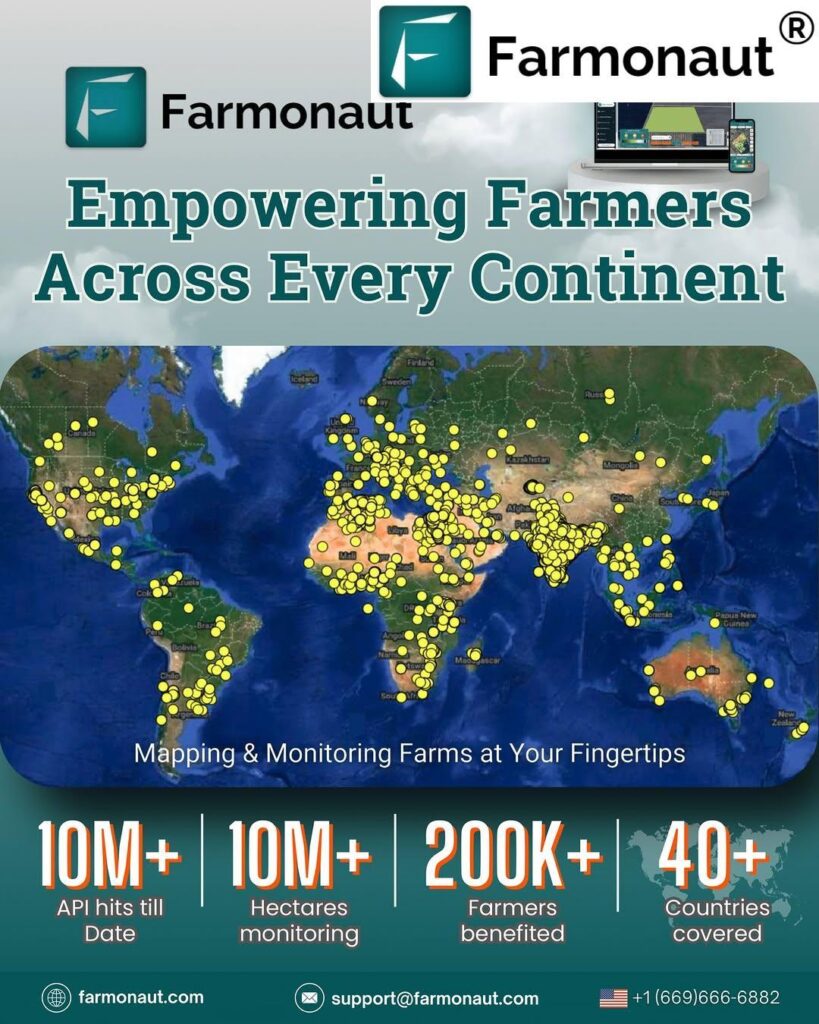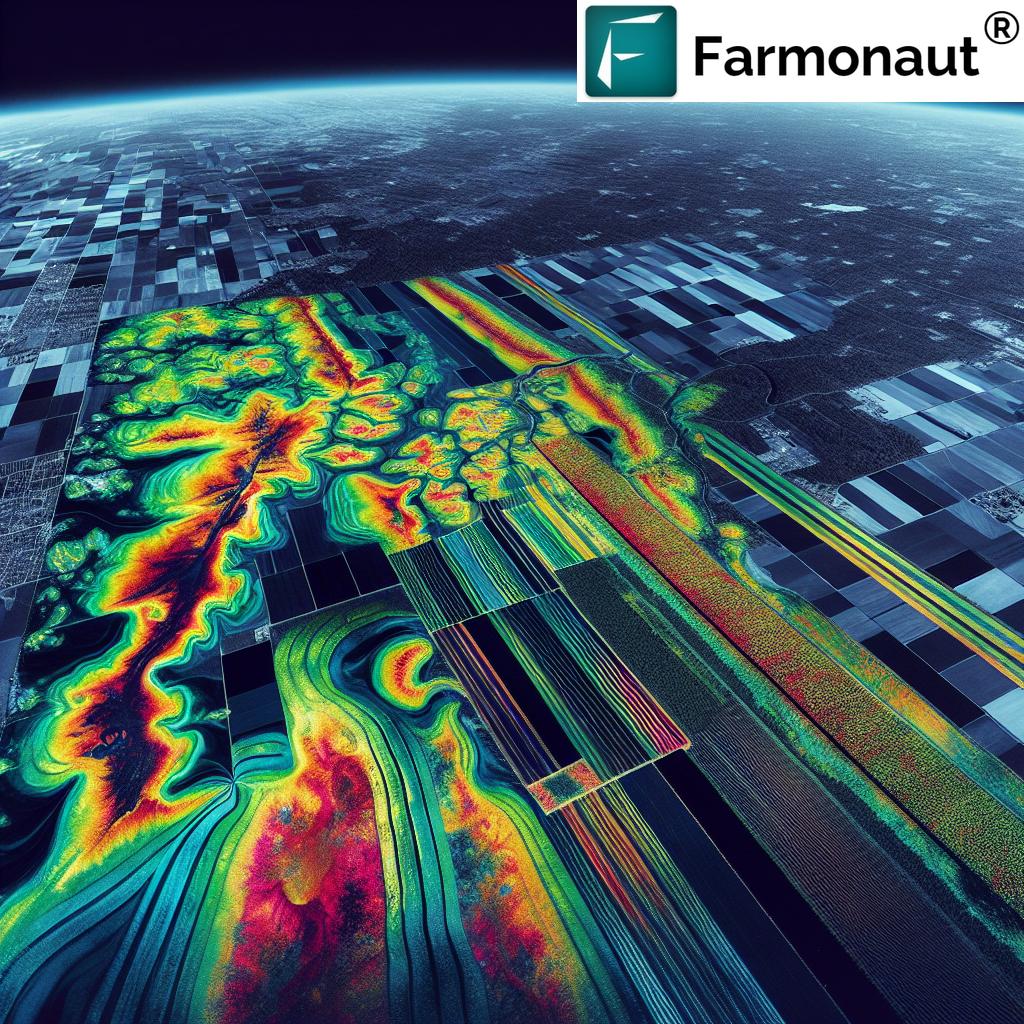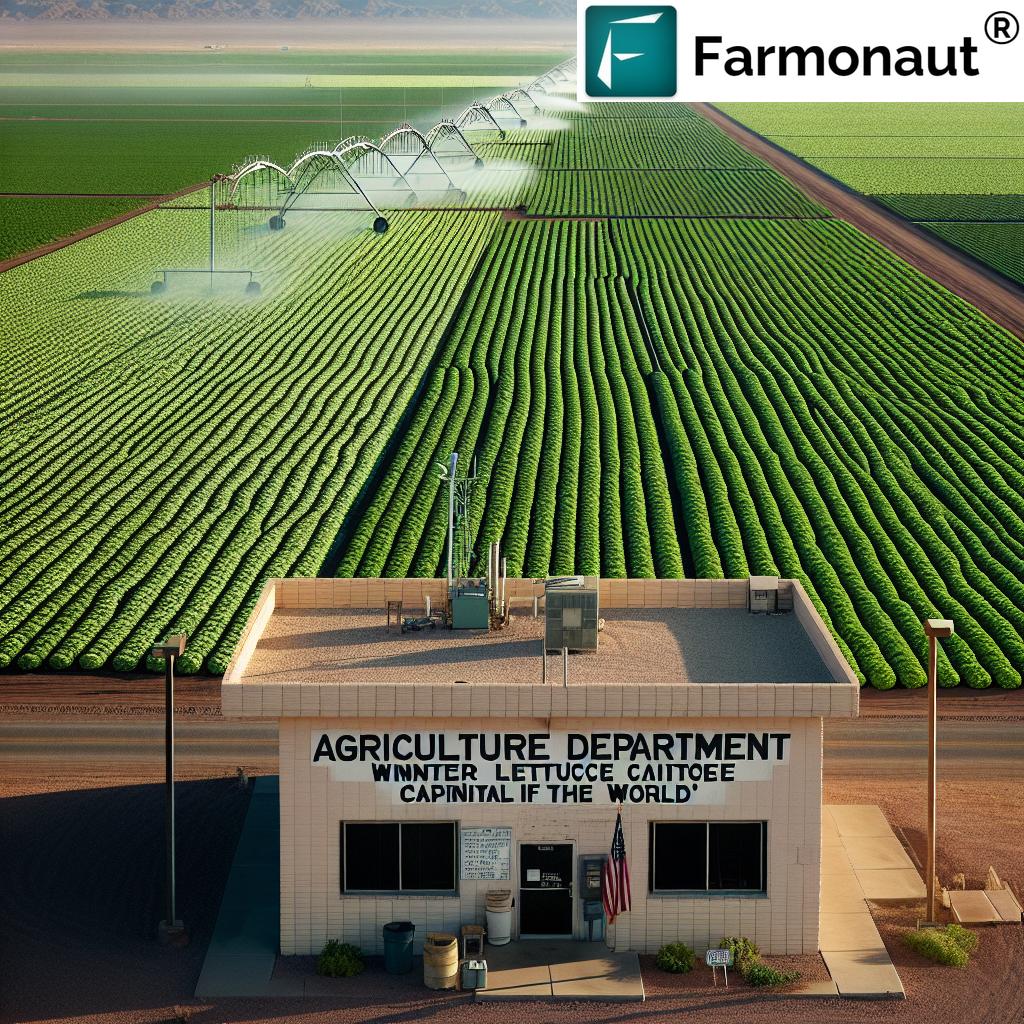US Grain Trade Turmoil: Tariffs, Panama Canal Control, and Global Market Shifts Reshape Agricultural Landscape
“US grain trade faces challenges as its market share declines, with Brazil emerging as a major competitor in global exports.”
In the ever-evolving world of agricultural commerce, we find ourselves at a critical juncture where the US grain trade and North American agricultural exports are facing unprecedented challenges. The landscape of global agricultural markets is undergoing a seismic shift, driven by a complex interplay of factors including trade policies, geopolitical tensions, and strategic infrastructure control. As we delve into this intricate web of issues, we’ll explore how these forces are reshaping the international grain market and what it means for producers, traders, and policymakers alike.
The Tariff Tango: A Delicate Dance of Trade Relations
On February 3, 2023, a ray of hope emerged for North American grain producers and traders as U.S. President Donald Trump announced a temporary pause on the previously imposed 25% tariffs on imports from Canada and Mexico. This decision came as a response to concessions from the Canadian and Mexican governments to enhance border security, addressing concerns about illegal immigration and the influx of the opioid fentanyl into the United States.
However, the relief may be short-lived. Veteran economist Dan Basse expressed skepticism about the longevity of this pause, predicting a likely reintroduction of the tariffs within a month or two. This uncertainty underscores the volatile nature of current trade relations and the precarious position of US agricultural exports in the global market.
The Economic Stakes: A Numbers Game
- Canada and Mexico represent crucial markets for US agricultural exports, with figures reaching $29.9 billion and $29.2 billion, respectively.
- Over 40% of US corn exports—24.5 million tonnes in the agricultural year 2023-24—were destined for Mexico.
- Mexico stands as the largest buyer of US wheat and the third-largest for soybeans.
These statistics highlight the significant economic ties between the US and its neighbors, emphasizing the potential impact of trade policies on US farmers and the broader agricultural sector.
The China Factor: A Trade War’s Ripple Effects
The backdrop of these developments includes a more complex landscape of US trade relationships, especially concerning China. The ongoing trade war, initiated by Trump in 2018, has had far-reaching consequences for US agriculture:
- US soybean and corn producers have lost significant market share to Brazil.
- Retaliatory tariffs from China have devastated certain sectors of US agriculture.
- The uncertainty has led to a reconfiguration of global agricultural trade flows.
As we navigate these turbulent waters, it’s crucial for agricultural stakeholders to stay informed and adapt to the changing landscape. Tools like those offered by Farmonaut can provide valuable insights for farmers and agribusinesses looking to optimize their operations in this challenging environment.

The Panama Canal: A Strategic Choke Point
“The Panama Canal plays a strategic role in US grain shipments, influencing the efficiency and cost of agricultural exports.”
Beyond tariffs, another area of emerging concern is the strategic competition over control of the Panama Canal between the US and China. This vital waterway serves as an essential route for grain exports, making it a focal point of geopolitical interest:
- Following a visit by US Secretary of State Marco Rubio, Panama opted not to renew a critical infrastructure agreement with China, which was part of the Belt and Road Initiative.
- Control over the canal could significantly impact US access to markets in the Pacific.
- The efficiency and cost-effectiveness of grain shipments through the canal directly affect the competitiveness of US exports.
For farmers and agribusinesses looking to navigate these complex logistical challenges, utilizing advanced satellite-based farm management solutions like those provided by Farmonaut can offer a competitive edge in optimizing production and distribution strategies.
Shifting Sands: The Decline of US Agricultural Dominance
Dan Basse’s analysis reveals a broader trend of declining US dominance in the agricultural export market:
- In 1979, the US accounted for 62% of global grain and ag trade.
- Today, that figure has plummeted to just about 12%.
- China is making strides toward self-sufficiency in agriculture through investments in genetically modified crops.
- Brazil has emerged as a formidable competitor, particularly in soybean and corn exports.
This shift in market dynamics necessitates a reevaluation of strategies for US producers and exporters. Embracing technological innovations and data-driven decision-making, such as those offered through Farmonaut’s API, can help stakeholders adapt to these changing market conditions.
Future Outlook: Navigating Uncertain Waters
Looking forward, Basse projects a bearish scenario for grain prices unless driven by new demand factors, such as biofuels. Key considerations include:
- If South American crop forecasts materialize and domestic corn acreage rises, grain prices may continue to decline.
- Russia’s winter wheat conditions remain uncertain, adding another variable to the global supply equation.
- The lack of immediate demand drivers poses challenges for price stability in the grain market.
In this environment of uncertainty, leveraging tools for real-time crop monitoring and market analysis becomes crucial. Farmers and traders can benefit from platforms like Farmonaut, which provide valuable insights into crop health and market trends.

Comparative Analysis of US Grain Exports
To better understand the evolving landscape of US grain trade, let’s examine a year-over-year comparison of exports for key grain types:
| Grain Type | Export Volume (million metric tons) | Year-over-Year Change (%) | Top Export Destinations | Market Share (%) |
|---|---|---|---|---|
| Corn (2023) | 48.3 | -15% | Mexico, Japan, China | 28% |
| Corn (2022) | 56.8 | +5% | Mexico, China, Japan | 33% |
| Soybeans (2023) | 52.7 | -8% | China, EU, Mexico | 31% |
| Soybeans (2022) | 57.3 | +2% | China, EU, Mexico | 34% |
| Wheat (2023) | 23.8 | -10% | Mexico, Philippines, Japan | 12% |
| Wheat (2022) | 26.4 | -3% | Mexico, Philippines, Japan | 14% |
| Projected 2024 (All Grains) | 120.5 | -3% | Mexico, China, Japan | 23% |
This table illustrates the challenges facing US grain exports, with declines across all major grain types in recent years. The projected figures for 2024 suggest a continued downward trend, underscoring the need for strategic adaptations in the US agricultural sector.
Adapting to the New Normal: Strategies for Success
As we navigate this complex landscape, several strategies emerge for US farmers and agribusinesses to maintain competitiveness:
- Embrace Technology: Utilize advanced farm management tools like those offered by Farmonaut to optimize production and reduce costs.
- Diversify Markets: Explore new export destinations to reduce dependence on traditional markets affected by trade tensions.
- Focus on Value-Added Products: Invest in processing and product development to create higher-value exports less susceptible to commodity price fluctuations.
- Enhance Sustainability: Adopt sustainable farming practices to meet growing global demand for environmentally friendly agricultural products.
- Collaborate and Innovate: Form partnerships with research institutions and agtech companies to develop new crop varieties and farming techniques.
The Role of Technology in Navigating Market Challenges
In these turbulent times, technology plays a crucial role in helping farmers and agribusinesses adapt to market challenges. Platforms like Farmonaut offer a range of tools that can provide significant advantages:
- Satellite-Based Crop Health Monitoring: Real-time insights into crop health allow for timely interventions and optimized resource allocation.
- AI-Driven Advisory Systems: Personalized recommendations based on data analysis can improve decision-making and farm productivity.
- Blockchain-Based Traceability: Enhanced supply chain transparency can open up new market opportunities and build consumer trust.
- Resource Management Tools: Efficient management of farm resources can lead to cost savings and improved sustainability.
By leveraging these technologies, US farmers can enhance their competitiveness in the global market, even as trade dynamics continue to evolve.
The Importance of Data-Driven Decision Making
In an era of uncertainty, data-driven decision-making becomes paramount. The USDA and other agricultural bodies provide valuable market insights, but real-time, farm-level data can offer a competitive edge. This is where solutions like Farmonaut’s API Developer Docs come into play, allowing for the integration of cutting-edge agricultural data into existing farm management systems.
By combining macro-level market data with micro-level farm insights, producers can:
- Optimize planting and harvesting schedules based on market projections and local conditions
- Adjust crop varieties and farming practices to meet changing global demand
- Implement precision agriculture techniques to maximize yield while minimizing input costs
- Make informed decisions about storage and selling strategies to capitalize on market fluctuations
Building Resilience in the Face of Trade Uncertainties
As trade tensions persist and global market dynamics shift, building resilience becomes crucial for US agriculture. This involves not only adapting to current challenges but also preparing for future disruptions. Key strategies include:
- Diversifying Crop Portfolios: Reducing dependence on a single crop or market can mitigate risks associated with trade disputes or market volatility.
- Investing in Infrastructure: Improving storage and transportation facilities can enhance the ability to weather market fluctuations and access new export opportunities.
- Fostering Innovation: Supporting research and development in areas such as drought-resistant crops or alternative uses for agricultural products can open new avenues for growth.
- Strengthening Domestic Markets: Developing local and regional markets can provide a buffer against international trade disruptions.
By implementing these strategies and leveraging technological solutions like those offered by Farmonaut, US farmers and agribusinesses can position themselves to thrive in an increasingly complex global marketplace.
The Future of US Grain Trade: Challenges and Opportunities
As we look to the future of US grain trade, several key factors will shape the landscape:
- Climate Change: Shifting weather patterns will impact crop yields and growing regions, necessitating adaptive strategies.
- Technological Advancements: Continued innovation in areas such as precision agriculture and biotechnology will play a crucial role in maintaining competitiveness.
- Changing Consumer Preferences: Growing demand for sustainable and plant-based products will influence crop choices and farming practices.
- Geopolitical Dynamics: Evolving international relations and trade policies will continue to impact export opportunities and market access.
Navigating these challenges will require a combination of strategic planning, technological adoption, and adaptability. Tools like Farmonaut’s satellite-based monitoring and AI-driven insights can provide valuable support in this endeavor, helping farmers and agribusinesses stay ahead of the curve.
Conclusion: Embracing Change in the Agricultural Landscape
The US grain trade finds itself at a pivotal moment, facing challenges from tariffs, shifting global market dynamics, and strategic competition over key infrastructure like the Panama Canal. While the road ahead may be uncertain, it also presents opportunities for those willing to adapt and innovate.
By embracing technological solutions, diversifying strategies, and staying informed about global market trends, US farmers and agribusinesses can navigate these turbulent waters and emerge stronger. The agricultural landscape is changing, but with the right tools and approaches, the US agricultural sector can maintain its position as a key player in the global food system.
As we move forward, platforms like Farmonaut will continue to play a crucial role in empowering farmers with the data and insights needed to make informed decisions in an ever-changing market. By leveraging these technologies and adopting a proactive approach to market challenges, the US grain trade can build resilience and find new paths to success in the global agricultural marketplace.
Farmonaut Subscriptions
Frequently Asked Questions
Q: How have recent tariffs affected US grain exports?
A: Recent tariffs have significantly impacted US grain exports, particularly to major markets like China. This has led to a decline in market share for US producers and increased competition from countries like Brazil.
Q: What role does the Panama Canal play in US grain trade?
A: The Panama Canal is a crucial route for US grain exports, particularly to Asian markets. Control over the canal can significantly impact the efficiency and cost of shipping grain from the US to Pacific markets.
Q: How is technology helping farmers adapt to changing market conditions?
A: Technologies like satellite-based crop monitoring, AI-driven advisory systems, and blockchain-based traceability are helping farmers optimize production, reduce costs, and access new markets. Platforms like Farmonaut provide these tools to help farmers make data-driven decisions.
Q: What strategies can US farmers adopt to remain competitive in the global market?
A: US farmers can remain competitive by embracing technology, diversifying their markets, focusing on value-added products, enhancing sustainability practices, and collaborating with research institutions for innovation.
Q: How is China’s agricultural policy affecting the global grain market?
A: China’s push towards self-sufficiency in agriculture, including investments in genetically modified crops, is reducing its dependence on US imports. This shift is significantly impacting global grain trade dynamics and US export opportunities.













